Enab Baladi – Ahmad Haj Bakri
Humam al-Zazou did not expect a long absence, now entering its eighth year, from his city of al-Bukamal in the Deir Ezzor countryside, which he left with his family after the Islamic State (IS) took control of it in 2013.
Although IS was removed from al-Bukamal in 2017, al-Zazou was unable to return because the city was held by Iranian militias and Syrian regime forces.
Al-Zazou says that “there is no difference between IS and Iran’s militias on the ground,” adding, “I follow updates in the city on a daily basis. Iran only aims to recruit and subjugate the city’s people so that the region would be under its management in the long run. To that end, it works in every way possible”.
Hidden objectives
Iran presents itself to the local community in Deir Ezzor and works to get closer to it through cultural activities and humanitarian services. However, it aims, according to witnesses, to establish control.
The Iranian Cultural Center is a model for the entities operating in Deir Ezzor, as it has opened branches in various cities of the governorate. Its former director, Abu Sadiq, claimed in an interview with the pro-government Sama TV channel that the center’s goal was to draw joy on the faces of the people of Deir Ezzor and its children. He also pledged to hold more festivals in the cities of al-Bukamal and al-Mayadin in the governorate’s countryside.
The center participates in most civil events, such as Mother’s Day, when the center’s director participated in a ceremony to honor mothers that was organized by the center in cooperation with the Deir Ezzor governorate. The center also honored a number of children. The center’s director said during the ceremony that the Syrian Arab Republic’s actions were part of the Islamic religious duty to stand with and assist the vulnerable.
Researcher Bader Safif explains that Iran is seeking to root its project within the popular incubator through these activities, in parallel to its military activity through militias that may one day depart from Syria, particularly if a political solution is reached one that demands the exit of these militias from Syria. It is a step that Iran seems to be anticipating and is therefore working to establish a long-term presence.
Iran rarely promotes its activities in Deir Ezzor in the media, especially through its media destined for Arab and international audiences. According to local sources and statements issued by the centers, Iran also offers scholarships, social, relief, and medical services to the local population through the Iranian Cultural Center, as well as associations coordinating with the latter. This investigation reveals Iran’s other objectives through its civil activity on the ground, exploiting its military power and broad influence.
Strike arm
The Iranian Cultural Center was established in Deir Ezzor governorate in mid-2018, almost a year after the Syrian regime and pro-Iranian militias took control of the governorate and expelled IS from it. According to three journalists from the governorate, its actual activity began in 2019.
Iran has established three main cultural centers in the cities of Deir Ezzor, al-Mayadin, and al-Bukamal, which are considered the most active in terms of the activities that are held and the interest shown by Iranian officials, in addition to sub-centers in other areas west of Deir Ezzor, such as the town of al-Tabani.
The activities of the Iranian Cultural Center in the governorate branch into more than one field, including religious, health, relief, educational, and cultural activities.
Researcher and journalist Bader Safif, who is from Deir Ezzor, where he worked as a teacher for a long time before the Syrian revolution in 2011, believes that Iran seeks to change the Sunni clan-themed features of the governorate by establishing such centers, which have permeated several sectors, most notably the education sector because of its essential role in brainwashing children and youth’s mind, and installing the doctrines of Shiite thought and Khamenei’s revolution.
On 26 last March, the Ain al-Furat Network, which is interested in covering events in Deir Ezzor, published pictures that it said were of an event honoring teachers that was conducted by the Iranian Cultural Center in the Deir Ezzor Directorate of Education in order to get closer to the people and infiltrate them to change their faith.
The network spoke of tributes to the very personalities honored by the center during the celebrations of the previous couple of years, reflecting the absurdity of the event and its establishment by the Iranian Cultural Center solely for the purpose of appearing interested in city affairs.
Controlling children’s minds
In February 2020, the Ain al-Furat Network posted video footage of the Iranian Cultural Center’s Scout Center in the al-Qusour neighborhood in Deir Ezzor, which Iranian militias are using as a center for activities targeting children by holding ceremonies and honoring students with the aim of “turning them into Shia” and sending them on trips to Iran and Sayyidah Zaynab in Damascus, which has become a stronghold of Iranian militias and a center for the spread of Shiism.
The spokesman for the Ain al-Furat Network, journalist Amjad al-Sari, told the author of the investigation that the Iranian Cultural Center is in full control of the education sector through its educational and religious centers, which have become located in each of the governorate’s cities, such as the An-Nour Assati’ (Shining Light) Center located in al-Mayadin, and the al-Ikhwa (Brotherhood) Center in al-Bukamal. These are centers dedicated to children where they are taught the Persian language and Shiite doctrine, in addition to recreational activities such as organizing trips to other Syrian governorates like Damascus and Latakia and distributing toys and gifts to children in most of the events held in Deir Ezzor and in other areas.
For his part, researcher Bader Safif says that any educational activity conducted by the Directorate of Education of the Syrian regime cannot take place without the participation of the Iranian Cultural Center, which sends a delegate to give a speech on behalf of the center. Most of the time, the center’s director is present in the governorate. The center also hired a person to coordinate between the center, the Directorate of Education, and the Vanguards of the Baath branch in the governorate; that person is none other than Rashid Faisal al-Obaid, who has also served as the general coordinator of the Mahdi Scouts Center since its opening in 2019, whose work is focused on weekly activities for children, recreational trips, and offering them gifts with the aim of endearing them to Iran.
The center is keen to participate in any cultural or political activity or event, or even those related to military events. It also provides support to any local organization to enhance its presence in any activity and to familiarize residents of the area with its regular participation, according to what journalist Ahed al-Salibi had said. The center also offers several theatrical performances targeting children, often accompanied by one of the activities it presents in the cities and villages of the governorate. An exclusive photo the investigation’s author obtained shows the mobile caravan, which is a truck used by the center in presenting its theatrical performances.
Investing in people’s health
Since taking control of parts of Deir Ezzor, and in the context of its work to control state facilities and most of the services provided to civilians for long periods, Iranian militias have either opened or rehabilitated hospitals and medical centers spread in the cities and towns of Deir Ezzor west of the Euphrates river, with the support of the Iranian Cultural Center.
These centers provide medical services. It also distributes vaccines for children and medicines for the population, especially those who suffer from chronic diseases such as heart diseases and diabetes. With the recent spread of the coronavirus (COVID-19), some centers have seen medical attention provided to people infected with the virus, along with the distribution of medical masks and vitamin C to the people.
The Sada al-Sharqiya website, which specializes in covering events in eastern Syria, had posted photos showing the medical centers spread in Deir Ezzor, which are supervised by doctors from Iran, according to what these photos had shown.
The Iranian Cultural Center also seized the al-Hanaa Hospital in the city of al-Bukamal, and changed its name to al-Shifaa Hospital, according to what was reported by the journalist Ahed al-Salibi, who hails from Deir Ezzor. Exclusive photos obtained by the author of the investigation show the entrance to al-Shifaa Hospital in the city, with the Iranian flag next to it. Moreover, the center opened medical clinics of the same name (al-Shifaa) in the cities of al-Mayadin and al-Ashara.
Al-Salibi added that the center took control of the al-Furat Hospital adjacent to the suspension bridge in Deir Ezzor. The center was operated in early February with the restoration and reopening of the al-Nour Hospital in the center of Deir Ezzor after winning a tender announced earlier by the governorate’s Directorate of Endowment (Awqaf) to invest in the hospital for a period of 35 years with an annual amount of 15 million Syrian pounds, the equivalent of approximately 5,450 US dollars according to the exchange rate at that time (12 December 2020).
The author of the investigation obtained a recent exclusive photo showing the hospital’s restoration, which is not yet complete. It was confirmed in old photos as the hospital in question.

The renovation of al-Nour Hospital in the center of Deir Ezzor under the supervision of the Iranian Cultural Center
The former head of the Deir Ezzor Provincial Council, Dr. Anas al-Fateh, said that the cultural center representing Iran in the governorate exploits the difficult economic situation and the lack of services to provide people with several services, the most important of which are in the healthcare sector, in order to get closer to them, such as the services of hospitals and medical centers affiliated to it that are located in various regions of the governorate, which provide free medical services. The center also offers scholarships to students to get closer to them.
The cultural center also makes use of the activities held by its branches and centers for children, such as activities and courses. The participating children’s relatives receive relief aids and baskets via private cards, according to journalist Amjad al-Sari. The center, thus, prompts parents to send their children to participate in the centers’ activities and obliges parents to visit its branches to receive aid.
Listed on terrorist list
Several Iranian relief organizations working in cooperation with the Cultural Center are active in Deir Ezzor, the most important of which is the Jihad al-Bina Foundation, to which Iran entrusts the task of distributing most of the aid it provides and which was established in Lebanon in 1988 and is headquartered in the southern suburb of Beirut. It is also designated by the United States as a global terrorist organization.
The foundation defines itself as an Iranian humanitarian organization established in Syria to assist the people. Although there are few publications in which the foundation announces its activities, specifically in Deir Ezzor, it has a page on Facebook, unlike the Iranian Cultural Center, which does not have an official page on social media platforms, while only a few of its activities are advertised by pro-Iranian or Syrian regime sources and newspapers. According to researcher Safif, this is due to several reasons, the most important of which is Iran’s denial of the accusation that it is working to control and infiltrate the local community.
Away from the media
Safif added that, according to official statements, Iranian activity is limited to advisors and experts. If the center’s activities were to be covered by pro-Iranian media, the accusations against it of intrusion into society and ideologically controlling it would be proved.
On the other hand, cultural centers are working to disseminate their activities through Telegram channels to communicate activities to the local population in the governorate, who are the target group, while ensuring that no information about the activities would circulate outside the governorate.
According to the researcher, Iranian media works on not showing a significant role for Iran and its pro-cultural and religious militias during joint celebrations with the regime’s government. The researcher cites a recent commemoration of the regime’s control of the city of al-Bukamal, where the regime and Iranian media focused on showing only the regime’s flag while ignoring the banners of Iranian militias such as Hezbollah, Iranian Revolutionary Guard Corps (IRGC), the Fatemiyoun militia and others, as confirmed by news broadcasted by the pro-Iranian al-Alam news network.
It also seeks not to demonstrate its ideological activities to Arab and international media and to refute accusations made by many newspapers, news sites, and research centers against Tehran because of these centers; the most prominent of these charges were ones stating that Tehran is adopting soft power strategies, such as proselytizing and promoting Shiism among traditionally non-Shiite communities.
Clans to expand influence
Iran has approached clan leaders and figures to expand its influence in Deir Ezzor. Nawaf al-Bashir, a prominent ex-dissident, and sheikh of the Baqara clan, and commander of the Lions of Syria Corps, who returned to Syria after visiting Moscow and Tehran in early 2017, is the most prominent figure on which Iran relied to infiltrate Syrian clans after they attributed his clan to Ahl al-Bayt.
According to what Dr. Anas al-Fateh had told the author of the investigation, al-Bashir visited Tehran on more than one occasion with delegations from Deir Ezzor tribes who are invited to visit Iran periodically.
For his part, lawyer and human rights activist from the governorate of Deir Ezzor, Anas al-Rawi, says that the power and authority of the clan’s sheikh have significantly diminished following the Syrian revolution and that everyone in the clan had a different attitude and opinion that may very well differ from others’. With the multiplicity of currents on the ground and its strength, the clan’s sheikh’s persona was threatened, especially during the period when IS was in control of the governorate, which lasted nearly four years. It was in this spirit that Iran was able to work with many tribal figures and dignitaries who remained in or returned to the governorate after coordination with Iran. The process was based on an exchange of interests between the two parties, through which Iran returned part of the authority and power of those dignitaries and granted them several privileges in exchange for their support and work under its supervision.
Legal point of view, a state within the state
As to the legality of the Cultural Center’s work, lawyer al-Rawi states that it is not known whether there is a legal license to operate such centers. But as long as they operate with the consent of the existing regime in Damascus and within its areas of control, they are legal in form. In terms of content, however, their work is certainly illegal as the centers do not perform their normal work, and they provide social and cultural services to the population. Such centers also exist for political and religious reasons, and therefore their existence is essentially criminalized by law according to the activities they provide.
Al-Rawi adds that what is truly alarming is that no one has any authority or control to follow up on the Iranian Cultural Center’s activities in Deir Ezzor. It is the highest authority in the governorate, and it is a state within the state in regime-held areas. This is similar to the situation in Lebanon under the authority of Hezbollah, also loyal to Iran, which does not hesitate to engage in activities contrary to Lebanese laws within its areas of control because it possesses military force. The situation in Deir Ezzor is similar.
Al-Rawi also points out that the aim of the Iranian Cultural Center and its affiliates in Deir Ezzor is to influence the population, specifically young people, as was done by IS during its period of control over the governorate; the organization may have gone, but its impact still exists. Iran wants to have an impact on the region, even if it withdraws from it militarily, and this is what it is working for and counting on.
Fake names
For his part, researcher Bader Safif says, “the most difficult task in our work is identifying the Iranian personalities who manage and supervise the work of these centers in the governorate.” For example, the former director of the cultural center in the governorate, who remained for years with no one knowing his real name, answers to the name “Abu Sadiq” and was only known through his pictures that were published during his participation in the events held by the center.
Now, the center is run by a person known as Hajj Mortada with no available pictures of him either, and all we know about him is the aforementioned last name. In this, the researcher recalls the period when IS was in control of the governorate and the same difficulties encountered in identifying the names of the persons who run the organization’s center in Deir Ezzor.
Thus, the military and civil roles complement each other to a large extent, as the Iranian militias provide the necessary protection for the different types of civil work that Iran undertakes in Deir Ezzor, while civil charitable and cultural activities offer a kinder face to the Iranian presence as a whole, and seek to give it legitimacy and popular acceptance. The two military (the recruitment of young men) and civil roles (provision of benefits to the population) would bring Iran’s desired access and direct contact with communities in Deir Ezzor.
This investigation was completed with the support of the Adwa Project and supervised by Zaid Mastou.
if you think the article contain wrong information or you have additional details Send Correction
النسخة العربية من المقال
-
Follow us :
Most viewed
- Washington clarifies to Enab Baladi Assad's claims of secret meetings with US officials
- Al-Assad issues decree on establishing alternative information ministry
- Biden signs "Captagon II" act to pressurize Assad
- US Senate approves “Captagon II” bill, paving way for presidential signature
- After controversy over his fate, Ali Mamlouk appears in Russia











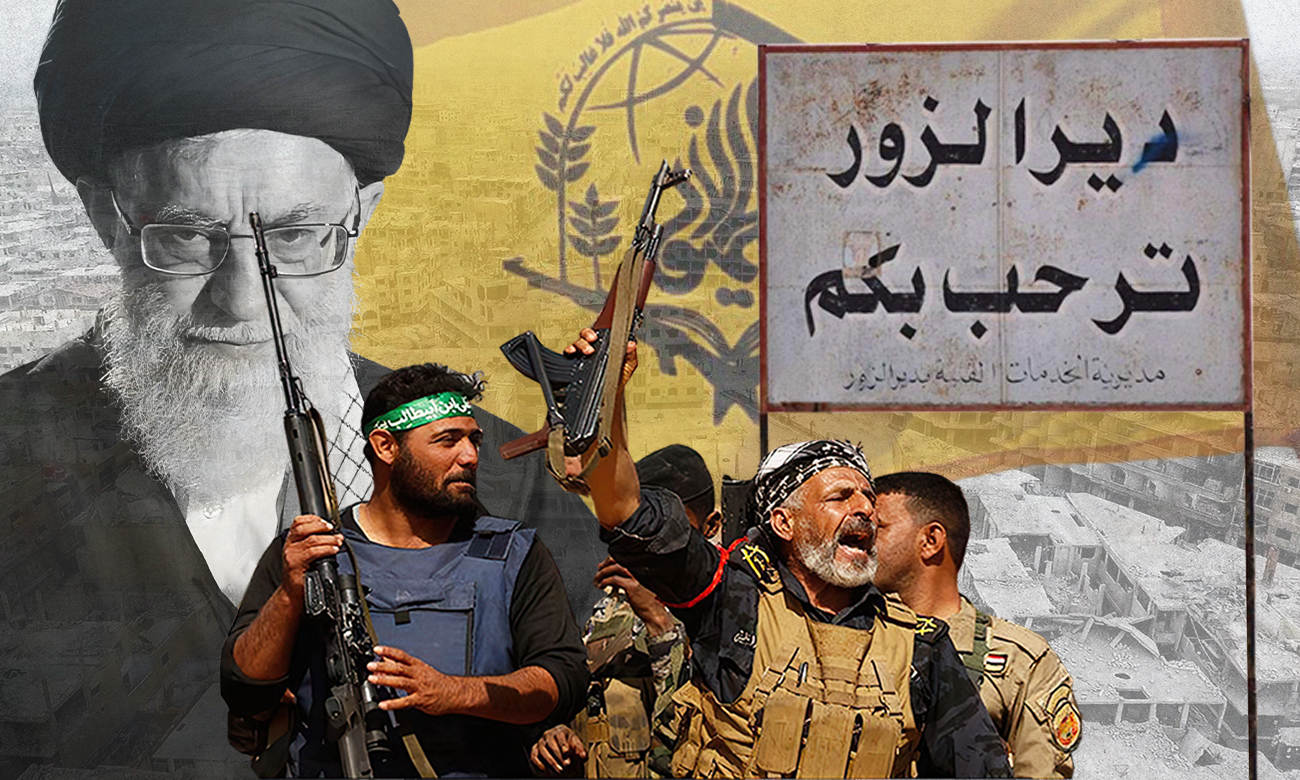
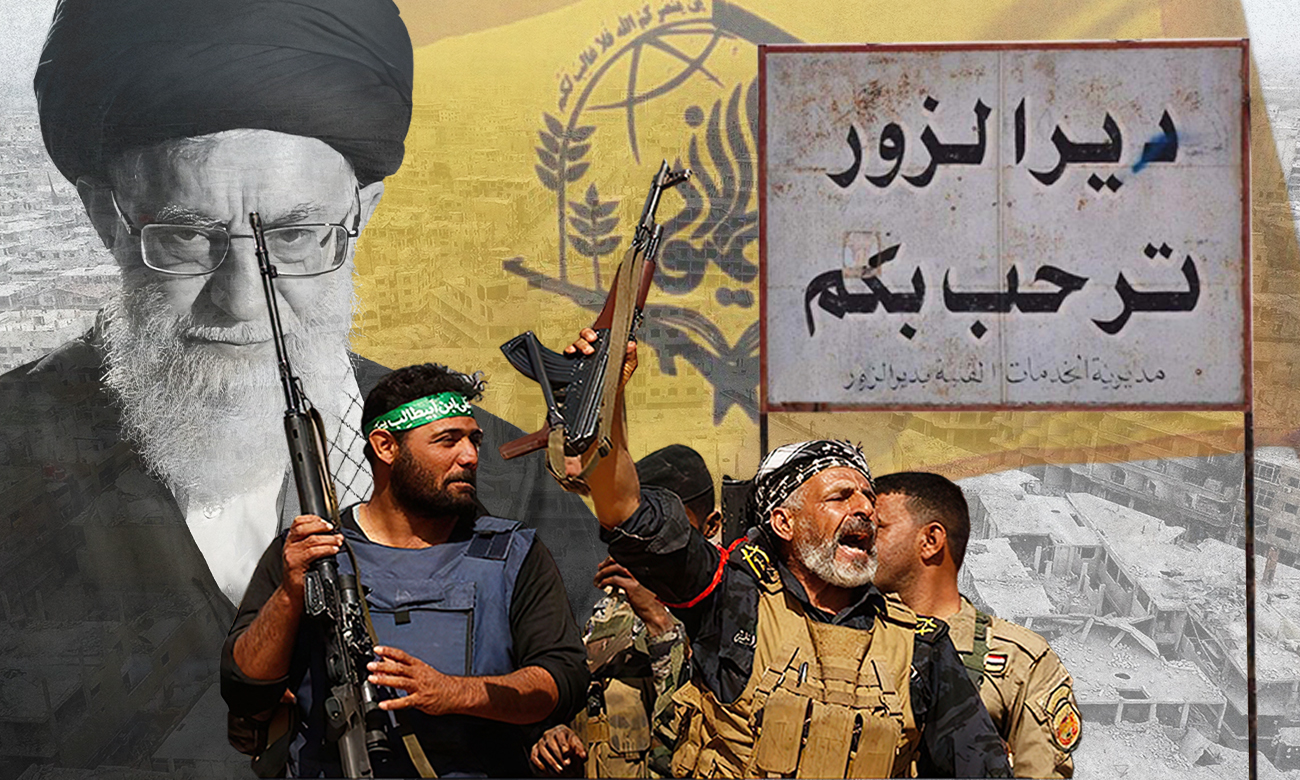






 A
A
A
A
A
A

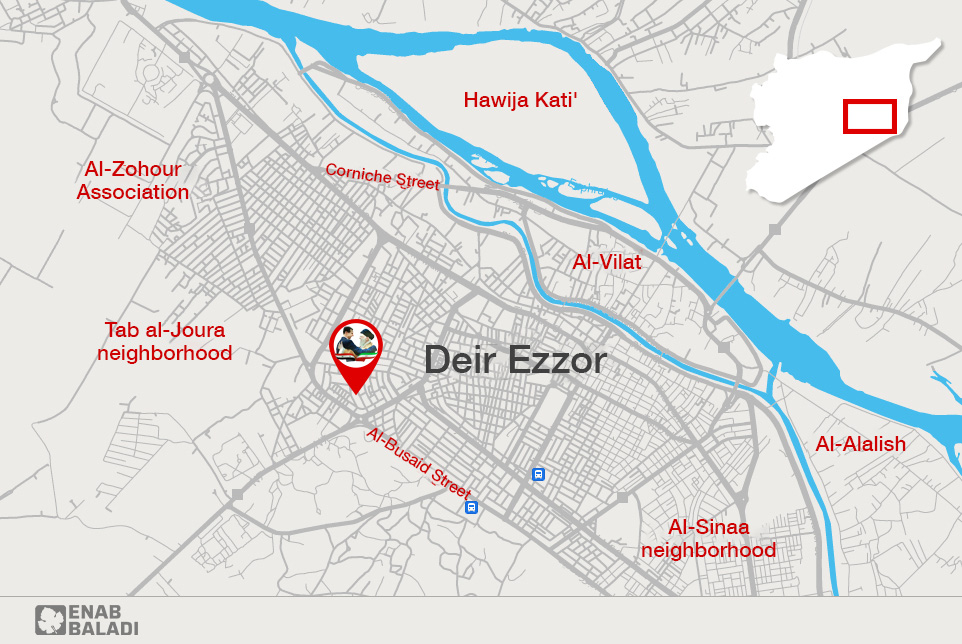
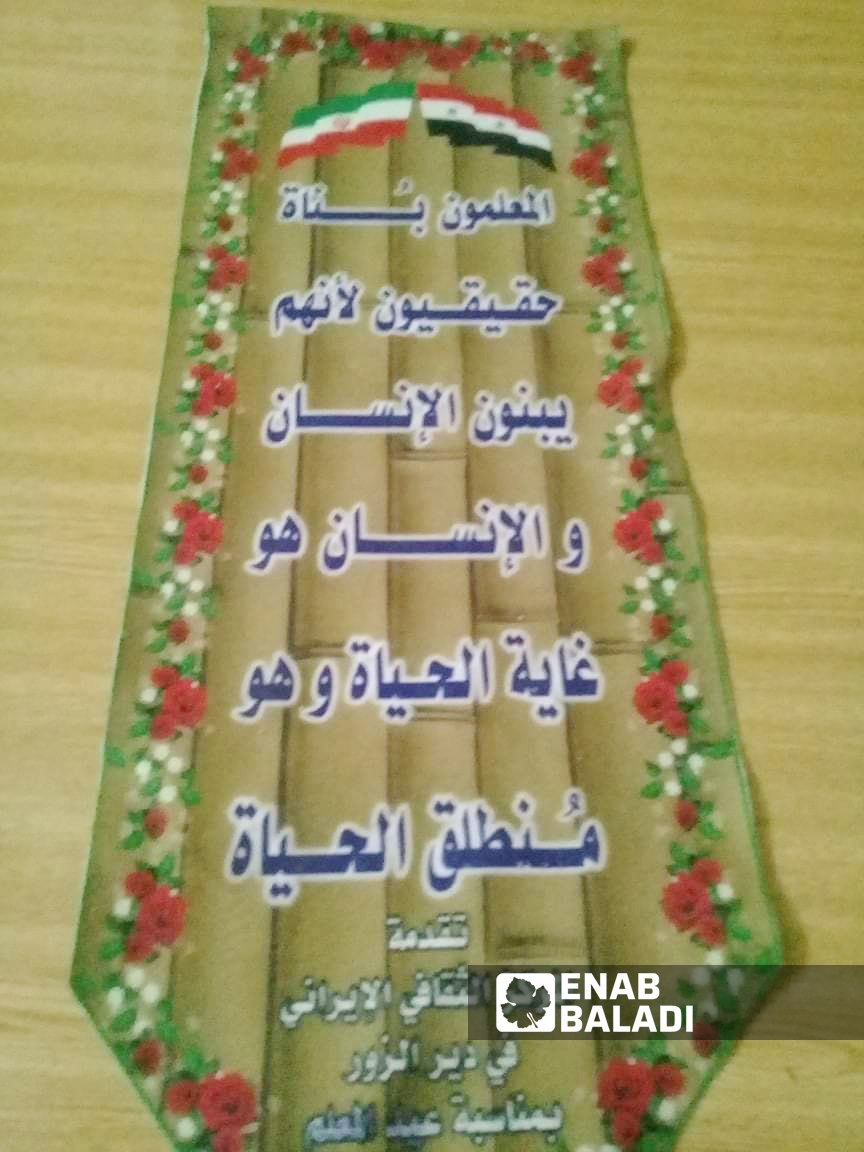
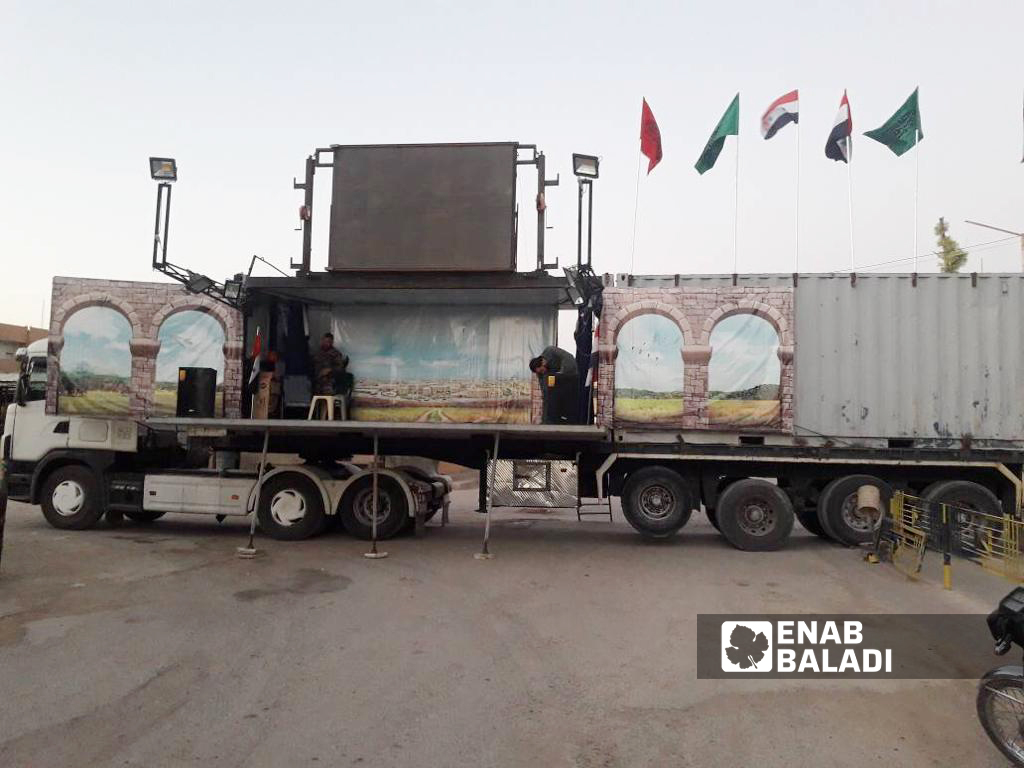


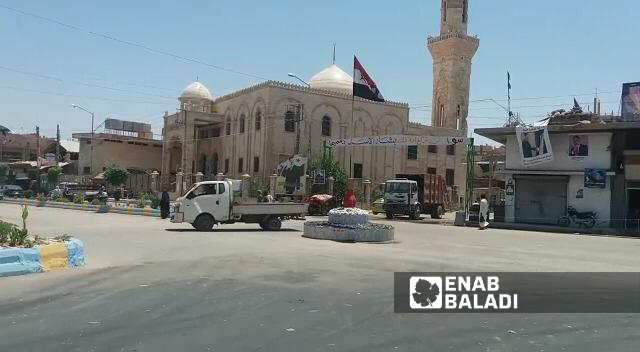

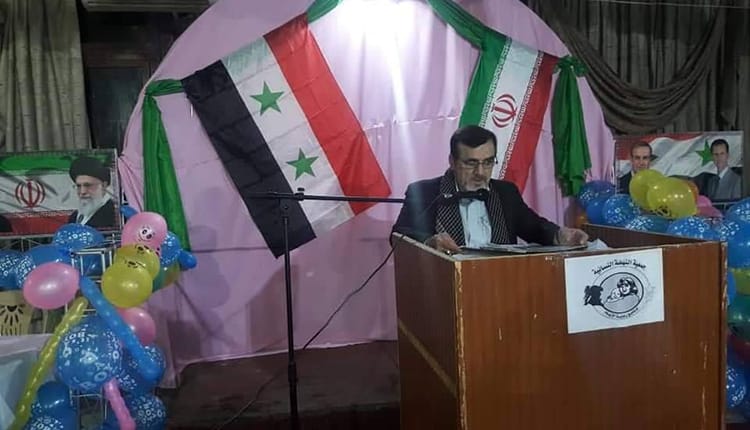


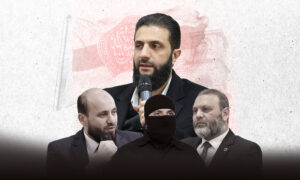
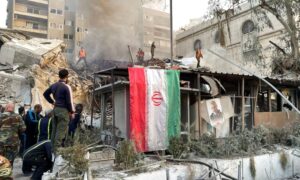

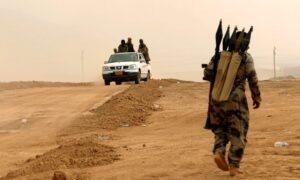
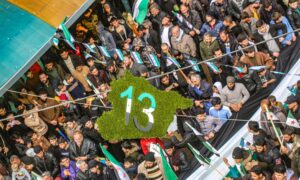
 More In-Depth
More In-Depth